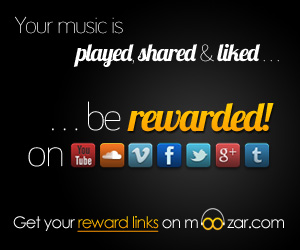Photo: The Edirol R-44, commonly used by NYCtaper
by Jason Epstein
A Look at Live Bootlegs
When I was a teenager in the early 2000s, I’d scour the internet in search of my favorite band’s live audio and video bootlegs. Back then, a VHS containing a single performance could easily cost upward of $30, (though, I’m sure some went for a lot more depending on quality, rarity, and artist), and it was worth it. In exchange for your money or effort, you got an unlicensed, unofficial, raw look at a musical performance you didn’t attend, but could still watch over and over paying attention to each nuance of the music, on-stage banter, audience attitude, and performance. It was a special experience, second only to being in attendance.
The bootlegs were purchased or traded on CD, cassette, or VHS, and once you built up a collection, you could begin trading. Soon, services like eBay came around and it connected bootleggers more than ever, providing exposure along with purchasing ease-of-use and seller accountability.
But today, bootlegs and bootlegging is a completely different experience, changed forever by online web 2.0 experiences such as the one YouTube provides. Offline, it’s all about the vast improvement of recording devices in terms of portability, physical footprint, and overall A/V quality. Let’s take a look at how these changes came about…
Bootleg Recording Devices
Many devices have been used to make audio and video bootleg recordings over the years. In the late 60s, mini-cassette and micro-cassette loaded devices provided a portable solution for voice recording, though they were also used for live music recording. Digital audio tape (DAT) decks came around in the late 80s and had the ability to record at a higher quality than CDs. Digital voice recorders are inexpensive and portable options with a small enough footprint to avoid detection upon entrance to concert grounds or venues. Couple this with an adapter and a unidirectional, pre-amped mic, this can provide far greater sound quality.
A Brief Bootleg Timeline
In the 70s, amidst rock artists who played out often, bootlegs were an underground “product,” sold by the occasional record store or bootleg-specific labels via mail order.
In the 80s, dubbing equipment allowed for quick production of copies and wider distribution, but the audio quality remained poor.
In the 90s, bootleggers and bootleg fans began converting their old vinyl and cassette tapes into compact discs, ripping them to computers and using the internet as a tool for both purchase and distribution.
In the 2000s, fans could record videos and audio more easily as the decade went on with digital recorders, mini-DV cameras, digital cameras, cell phones, and smart phones. The sharing and ownership of bootlegs today is more of a free market than anything with countless live recordings available on video-streaming sites like YouTube, Vimeo, and more.
The only people who stand to make any legal money from “bootlegs” are the artists themselves, making them not really bootlegs at all. Metallica and the Red Hot Chili Peppers record each of their live shows and then make them available for download at a cost, for example, while Queen is releasing bootlegs as digital downloads from their online store.
Archive.org, NYC Taper, (both not-for-profit, non-commercial entities), and Wolfgang’s Vault are examples of sites that host both downloads and streaming of live concerts while BitTorrent has paved a path for greater distribution with its broad appeal and fast upload/download speeds. 64 and 128kbps quality files are a thing of the past, with higher-fidelity mp3s and FLAC files leading the way.
In the 2010s and further, we may see the recording, mixing, mastering and distribution of live shows becoming so inexpensive and easy to produce that every concert by every band that stands to make some extra money will be recorded and provided for fans to bolster album sales and capitalize further on live concert sales. So, what dictates the difference between an official live recording (which would otherwise be a bootleg) and an official live album release? It’s likely that the definition will continue to blur.
Fun fact: According to the book Bootleg! The Rise & Fall of the Secret Recording Industry, the five most bootlegged artists of all time are Bob Dylan, Bruce Springsteen, The Beatles, Led Zeppelin and The Rolling Stones. Rock on.
Jason Epstein is a writer based in the New York City area, and has been writing as long as he can remember. In his career he’s done a wide variety of pieces and projects including interviews with notable musicians, short stories, comedic commentary, entertainment writing, event coverage, photography and more. He can be reached at Jasonepstein84 at gmail dot com.














Comments are closed.